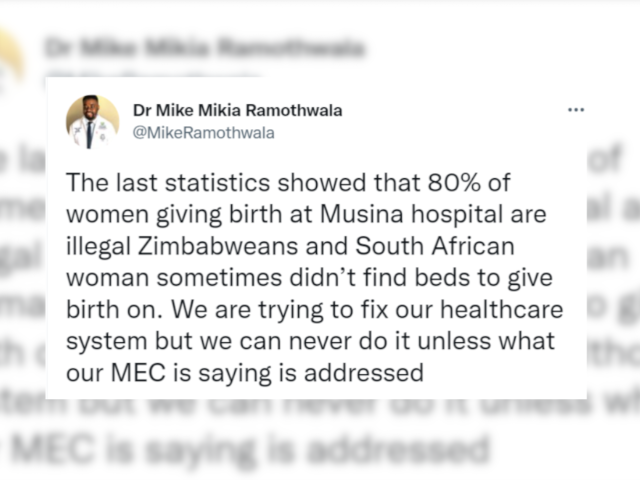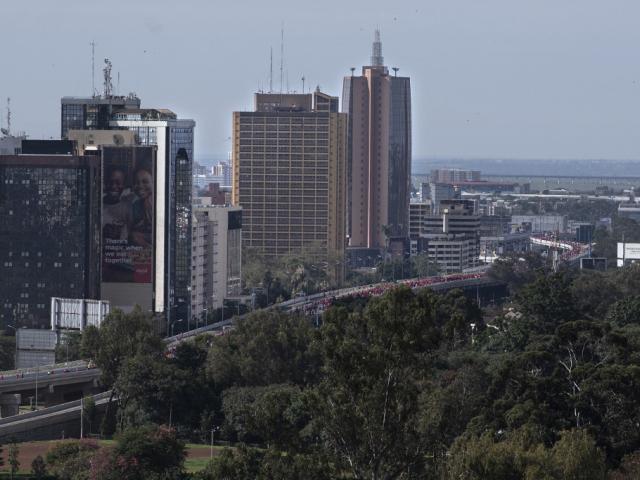-
In his 2021 Madaraka Day speech, president Uhuru Kenyatta said Kenya’s gross domestic product at independence in 1963 was KSh6.4 billion. This is mostly correct. But his claim that this was increased to KSh4.5 trillion in the following 50 years is misleading.
-
He claimed his administration had doubled the GDP achieved by “the colonisers and the first three administrations”. This is also misleading.
-
Two claims about the national government’s allocations to Kenya’s 47 counties are understated. And claims about issuing more title deeds to land, and improved renal health facilities, are mostly correct.
With just over a year left in his presidency, Kenya’s Uhuru Kenyatta has been highlighting his administration’s achievements since he took office in 2013.
His second and final term is set to end in August 2022. A notable theme in his recent statements has been comparing his legacy with that of his predecessors.
On 1 June 2021, in a speech marking 58 years of self rule on Kenya’s Madaraka Day national holiday, Kenyatta drew attention to economic growth and improvements in healthcare, among other areas.
We looked at seven claims in his speech. We have asked the presidency to comment on our findings.
Kenyatta said that “after 74 years of colonial occupation, that was what Kenya was worth every year”. Kenya became independent on 12 December 1963.
A country’s gross domestic product is an attempt to measure the size of its economy. It is the market value of all goods and services produced in a country in a given period, usually a year.
For historical data on GDP, we consulted John Kinuthia, senior programmes officer at IBP Kenya, the Kenyan arm of the International Budget Partnership budget transparency think tank. He directed us to the World Bank’s data portal. This is compiled from the national accounts of individual member countries. It shows that in 1963, Kenya’s GDP was KSh6.6 billion in that year’s prices, a measure known as current GDP.
We therefore rate the president’s claim as mostly correct.
Kenyatta’s three predecessors, including his father Jomo Kenyatta, were in office from independence in 1963 to 2013.
We asked Benjamin Muchiri, who is in charge of national accounts at the Kenya National Bureau of Statistics, how GDP should be compared across several years.
It was important to adjust for inflation, he said. “When we are reporting GDP for 2020, it is based on 2020 prices, and 2019 GDP would be based on 2019 prices. When we say current GDP it means that at the respective year price,” Muchiri said.
He gave the example of a farmer selling 100 bags of maize at KSh3,000 this year. His output would be KSh300,000. Next year, if the farmer produced the same number of bags but sold each for KSh4,000, their output would be KSh400,000.
“In actual sense, your output has not changed,” he said. “It is the same 100 bags, but the prices have gone up. When you are doing constant GDP [on the other hand], it holds the prices constant. The only thing that changes is either the quantity or the quality.”
The World Bank also says that constant prices are adjusted for inflation and so measure true growth. Current prices aren’t, and don’t.
In addition, how GDP is calculated has changed over time as the system of national accounts – internationally agreed standards for measuring economic activity – are reworked to cater for changes in the economy, Muchiri said. The key changes were in 1968, 1993 and 2008, when the current guidelines were established, he added.
The World Bank data shows that Kenya’s current price GDP grew from KSh6.6 billion in 1963 to KSh41 billion in 1978 when the senior Kenyatta died. In 2002, when Moi stepped down, it was KSh1.04 trillion, and KSh4.75 trillion in 2013, when Kibaki left office.
But GDP for 1963 at constant prices comes to KSh371.9 billion. By the time Kenyatta took office in 2013, GDP when adjusted for inflation was KSh3.6 trillion.
|
Kenya’s GDP at start and end of presidential terms |
||
|
Year |
Current price GDP |
Constant price GDP |
|
1963 |
KSh6.6 billion |
KSh371.9 billion |
|
1978 |
KSh41 billion |
KSh998 billion |
|
2002 |
KSh1.04 trillion |
KSh2.1 trillion |
|
2013 |
KSh4.75 trillion |
KSh3.65 trillion |
The figures appear to swing wildly. This is to be expected.
“We must be very careful whenever we try to compare GDP across different years,” Dr Abraham Rugo, the country manager of budget transparency think tank IBP Kenya, told Africa Check.
In doing the maths, we have to consider inflation, currency valuation, population changes, technology and movements in the services sector across the years, he said.
While Kenyatta’s figure of KSh4.75 trillion for 2013 is accurate, it is not real growth. When adjusted for inflation, the actual GDP that year was about a quarter (23%) less.
We therefore rate the president’s claim as misleading.
Kenyatta said the country’s GDP was now KSh10.3 trillion. He gave 1885 as the year the country was colonised, making it 128 years from then until he took office in 2013.
The most recent government data puts Kenya’s GDP at KSh10.2 trillion in 2020. The World Bank’s figure is slightly higher: KSh10.5 trillion in 2020.
In 2013 GDP was KSh4.75 trillion, less than half of these figures. This seems to support Kenyatta’s claim that GDP has doubled.
But the claim faces the same comparison challenges discussed in the previous claim.
The president’s comparison was based on nominal, or current, values, John Mutua, the programmes coordinator at the Institute of Economic Affairs Kenya policy think tank, told Africa Check.
But we can’t directly compare GDP under Kenyatta with GDP under his predecessors, Mutua said.
“One has to factor inflation; there are issues of population growth and the likes. A comparison of just nominal figures is not accurate.”
The comparison also discounts the 2014 rebasing of GDP that, on paper, increased the size of the economy by 25%. (Read our analysis: The trouble with statistics in Africa.)
GDP growth built from previous achievements
A good indicator would be to use “real” GDP, which is adjusted for inflation, Mutua said. This was KSh5 trillion in 2019 according to data from Kenya’s central bank. The most recent World Bank figure we found was also KSh5 trillion, but for 2020.
The rise from KSh3.6 trillion, the real GDP in 2013, to KSh5 trillion in 2020 is not a doubling. On that score alone, the president is incorrect.
Population size also matters when calculating GDP, IBP Kenya’s Rugo told us. This is because household consumption is relevant.
“Does the government want to take credit for the annual rise in population numbers?” he asked.
Kenyatta’s administration has invested heavily in major infrastructure such as rail, roads and energy, adding to the GDP, Rugo said. A lot of this is driven by debt, but does count when calculating GDP.
Rugo also said that while Kenyatta’s administration could lay claim to the infrastructure investments, a lot of the economic activity driving GDP growth today were put in place under his predecessor, Mwai Kibaki.
“GDP is incremental. You don’t start from zero,” he said.
Kenya’s constitution says the national government must share revenue with the country’s 47 counties. It adds that this share must not be less than 15% of the last audited and approved national revenue.
The counties also receive grants from the national government. Allocations to counties are set out in the law on division of revenue, which is approved every year.
The table below shows the total allocation to counties since 2013.
|
Allocation to Kenya’s counties (2017 to 2020) |
|
|
Fiscal Year |
Amount (KSh billions) |
|
2013/14 |
9.8 |
|
2013/14 |
210 |
|
2014/15 |
226.7 |
|
2015/16 |
287 |
|
2016/17 |
302.2 |
|
2017/18 |
345.7 |
|
2018/19 |
372.7 |
|
2019/20 |
378.5 |
|
2020/21 |
369.9 |
|
TOTAL |
2,502.5 |
Source: Division of Revenue Acts
The total is KSh2.5 trillion. The president understated it by KSh200 billion.
Kenya’s national treasury estimates GDP at the end of the 2019/20 financial year as KSh10.2 trillion, a“preliminary actual” figure. In his speech, the president said the most recent GDP figure was KSh10.3 trillion.
From 2012/13 to 2020/21, county governments received a total of KSh2.5 trillion. This is equivalent to 24.5% of GDP, not 16.9%.
On a “pro-rata basis”, Kenyatta said, the 5.1 million title deeds to land issued under his administration were “seven times what the previous administrations had done combined”.
According to Kenya's lands ministry, the government has issued 5.1 million title deeds from 2013 to 2021. Six million were issued in the first 50 years of independence.
In Kenyatta’s first term, from 2013 to 2017, more than 3.21 million titles were issued, the ministry says. Over 1.26 million deeds were issued from 2018 to April 2020.
|
Period |
Title deeds issued |
|
2013 to 2017 |
3,218,170 |
|
2018 to April 2020 |
1,269,396 |
|
Total (2013 to April 2020) |
4,487,566 |
Source: Ministry of Land and Physical Planning
Africa Check previously asked the lands minister for data on title deeds issued since April 2020, but has not yet received a response.
Based on the available data above, Kenyatta’s claim that his administration has issued 5.1 million title deeds in seven years is mostly correct.
This improved health infrastructure was an increase from only six renal units established under his three predecessors, Kenyatta said.
Enquiries with the Renal Patients Society of Kenya and the Kenya Renal Association brought us to McDonald Ogutu, a researcher at the association.
Ogutu told Africa Check that the association’s database showed “there are 212 renal units in Kenya at the moment, with 54 of them in public hospitals, while 158 are in private and faith based hospitals”.
In March 2016, the health ministry reported that the president had pledged to distribute 289 dialysis machines to go with the 44 in place. The figure is in the president’s state of the nation address of that year.
A September 2020 senate report records that 305 additional dialysis machines were installed in 54 public health facilities during Kenyatta’s tenure. Added to the 44, it brings the number to 349. We therefore rate the claim as mostly correct.





Add new comment